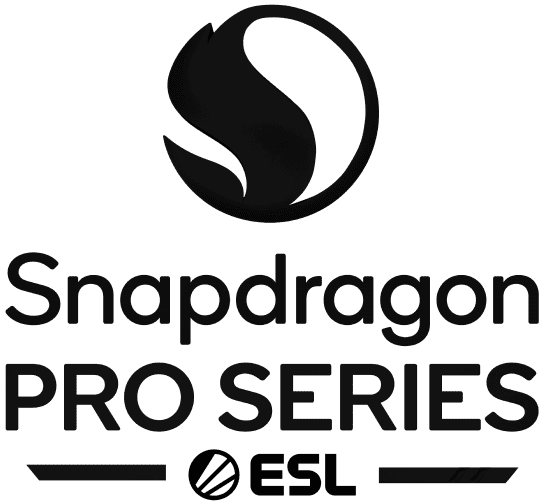This time round, we’ll move on to some of the more advanced aspects of commentary. They aren’t difficult to learn in most cases, but they are advanced in the sense that the majority of people who pursue a commentator role won’t have considered them early on.
As you become more experienced and attend larger events, these skills will become essential.
In this installment, we will be looking at:
 Style and technique
Style and technique- Dead air
- Introductions and funneling
- Throws and tosses
- Storylines and how to create and develop them
- Chemistry
So, without further ado...
Style and technique
Hopefully you will have developed your own style by now and those who watch and enjoy what you deliver will have latched on to some of the more common things you say or do. Not all of these will be good, of course, but through genuine feedback you can work on the elements of your broadcast that aren’t up to scratch.
That said, stamping your own personality on events and matches is very important, otherwise you’re just another commentator and you won’t stand out. Style is very personal, of course, and how you say certain things may be out of habit, but that doesn’t mean it will always work.

You have to remember that, unlike almost any other sports broadcasting, esports is entirely international. Cracking a joke about a national soap star might be funny to you and your fellow countrymen, but anyone outside that sphere of knowledge (i.e. the other 7 billion people on the planet) won’t have a clue what you’re talking about. So first of all, ensure what you say and how you say it is relatively universal rather than locally specific. This isn’t to say you have to be sterile about delivery, but just ensure that what you say is fairly universally accepted.
Style comes over time. Though most of your early success might be down to your personality, your progress will come from working on broadcasting skills, and this is what gives you your style - it’s a perfect blend of your personality, experience and skills.
The art of dead air
One of the most underutilized techniques in esports broadcasting is the correct use of dead air. As I explained in an earlier chapter, pacing is extremely important in helping to save your voice, but it’s also important for the flow of the commentary. The art of dead air is controlling those spaces in the commentary that allow you to reset the story, pique intrigue and set up other parts of the broadcast. Used correctly, dead air can really make those amazing plays even more amazing.
Early in your broadcasting career, it’s likely you’ll fall into the trap of wanting to speak as much as possible and fill every silence with words. It’s particularly difficult to avoid if you work with a co-commentator, too, as you’re always waiting for your turn, but if you want to be a top commentator, you’ll learn that dead air is one of the most powerful tools you can use.

There are a few different ways of using dead air, but first let me explain what it is, even though it may seem obvious.
Dead air is a choice. You decide when not to speak during the broadcast. It isn’t something that can be taught directly, but if you understand some of the times it can be useful, you’ll soon figure out when to use it for your specific game. Simply put, it’s the time during a match in which you consciously decide not to speak about anything.
Obviously if there are a ton of things going on during the match and you suddenly decide to stop talking, that’s going to be super awkward - the decision when to use dead air is critical to its success.
 There will be times in almost every game or match when a lull occurs. It is during these times that you can use some dead air to help reset the commentary, start on a different track of thought or begin to build up hype for the next play you believe is just around the corner.
There will be times in almost every game or match when a lull occurs. It is during these times that you can use some dead air to help reset the commentary, start on a different track of thought or begin to build up hype for the next play you believe is just around the corner.
If you work on your own, it’s relatively simple to choose when to do this. After a round in Counter-Strike, after a big fight in StarCraft when both players return to base, after a big teamfight in Dota or League of Legends are all good times to insert some dead air. It calms the commentary down, resets everything and allows you to come back in with something else.
If you work with a co-commentator it’s a little harder, but the same timing applies. I’ve found that hand signals work really well when you want to insert some dead air, with you asking your co-commentator with a hand signal not to talk until the time is right.
How long you leave it before coming back in is actually much harder to gauge and will need a little trial and error in each particular game. Obviously if the match kicks off again with some major action, you’ll need to come back in quickly. If, however, the game is still in a lull, I’ve found that waiting anywhere from 5 to 15 seconds can work fine.

These dead air gaps will also prick up your audience’s ears as they will subconsciously wonder what’s going on because they can’t hear anything - this is great for grabbing attention in a long match.
There are many times when you can use dead air but one of the most powerful is during the winning moment, especially when it’s a grand final on a big stage. Let the pictures do the work. Let the emotions come through the screen rather than talking over them. It’s unlikely you could ever do it justice, no matter how great a commentator you are, and all of the best sports moments have the perfect use of dead air at the point of winning a championship, cup or title.
The easiest way to deliver this perfectly is to, at the point of victory and with lots of energy, simply announce the team or player as the champion. For example, when Virtus.pro won the Counter-Strike tournament on the grand stage in Katowice’s Spodek arena, Stuart Saw ended the commentary with the phrase “…and your champions of EMS Katowice are VIRTUS.PRO!” and then he laid out.
The layout is very important. He simply allowed the pictures of the team celebrating, hugging and jumping up and down as the crowd cheered to come through without talking over it and thus made it an even more epic moment to remember.
If you listen to sports commentators as part of your self-improvement program, you’ll hear them do the same thing. You’ll also hear how they don’t fill every single moment of the broadcast with their voice.
Remember: you are there to guide the viewer and enthuse them, not talk them to death!

Introductions and funneling
When you start broadcasting at large events and on TV shows, you’ll likely have a host take care of most of what I call ‘the fluff’. That includes things like welcomes and introductions, but that said you still need to know how to do them and do them properly.
If you have a host, they will often introduce you and therefore when it comes to you, you don’t need to (and shouldn’t) reintroduce yourself or your co-commentators. It’s important to work with the host, too, and by ignoring what they just handed off to you with, you aren’t working as part of a team.
If the host throws to you during your introduction with a question, answer the question when the hand off comes or at least acknowledge it. If, on the other hand, they have formally introduced you, there is no need to acknowledge them, and if you do it all the time it will soon get repetitive. The most common ‘take’ from a ‘throw’ is “Thanks, [NAME]”, but it doesn’t need to be.
The best takes are those that start with a statement and a story introduction for that particular match. For example:
“It’s semifinal time in our championship, just one win away from competing in the grand final for $200,000 - welcome to the commentary desk.”
If the first part of the show comes to you as either a host or commentator, you will need to open the show, introduce everyone and welcome the viewers and crowd. It’s pretty standard stuff, but often fails to work.

The simplest and easiest way to do a show opening and introduction is by covering the basics:
1) Welcome everyone to the show (or welcome them back). You can do this by using the word ‘welcome’ or whatever you’re comfortable with. The most important thing is to ensure you also use the correct nomenclature for the show, for example “Welcome to day two of Intel Extreme Masters San Jose”.
2) I rarely introduce myself - it feels awkward to tell people who I am, especially with a lower third with my name on it. That said, there is no harm in doing so (although few TV personalities do on sports shows).
3) I will always introduce anyone I am working with, be it on a desk full of experts or with a player or team manager in an interview. Introduce them as fully as you can including a title or small titbit of information. “Alongside me is the top stat man in the world, Bruno” or, if it’s an interview, “Joining me now is MC, who just won his semifinal 4-3”, for example.
Once you have the basics done, the aim of opening the show or segment should always be to guide the viewer as smoothly as possible through what’s going to come next as well as later on. Essentially, you’re setting up the show for the viewer so they know what to expect. You could do this in many ways, but one of the best I’ve found is through funneling - in other words, you start as wide as possible on the event itself with the ultimate goal being to get to the first match or the next match of the segment.

I’ve shown below an example of how we use funneling to go from show opening and introductions through to the first match of the show.
- Welcome and introductions
- Rules and how the tournament works
- Schedule - explain how the day or event is planned (usually supported with graphics)
- Brackets or groups - talk through how players got to this point and how they progress next (supported by graphics)
- Specific first group or bracket - go from the entire tournament bracket or groups to the first one featured in your first match
- Talk about the first match overall
- Specifically talk about each team or player for first match
- Throw to commentators for the match
It doesn’t have to be in this order and other items can be added to this lineup, but it uses the basic understanding of funnelling from wide (the event itself) to tight (the first match), and you can’t go too far wrong if you use funnelling for your show introductions in any scenario.
Throws
The art of throwing is one that is often underestimated in esports broadcasting. A ‘throw’ (you may also have heard a throw referred to as a toss or hand off) is the technical term for passing off to the next part - or segment - of the show. A throw is not always to another person, and the way in which you throw can change in many ways depending on who or what you are throwing to.
As a host or presenter, you will need to be extremely strong with throws and their many different varieties. While you won’t need to be an expert on throws as a commentator, you will still need to know how to hand off properly, and with enough expertise to ensure that the show knits together properly.
One of the key aspects of a good throw is to pause just before you do the main throw. This allows you to slightly reset from whatever you were just talking about. You can literally count to two in your head and then deliver the throw - you’ll be amazed by how effective this is.

I’ll also use a lot of leading throws, particularly when going to a commercial break. This is simply teasing what’s coming up after the next piece of content. It could be that you tease the next match within the throw itself.
Regular throws
A regular throw is one that goes to another person on the show. You can achieve this in a number of ways, but the first rule of throws is to never use the word ‘throw’!
An alternative but not exhaustive set of words and phrases you can use instead are shown below, but make sure to come up with your own as they will feel more natural when you use them.
- “Go over to…”
- “Send it down/up/over to…” (although some producers I’ve worked with hate these as much as ‘throw’!)
 “Let’s go to…”
“Let’s go to…”- “Waiting to bring you the action is…”
- “Heading back to…”
- “Take it away, [NAME]”
- “It’s all yours, [NAME]”
- “Let’s go back to…”
- “In the [LOCATION] is [NAME X] with [NAME Y]”
Here are a few examples of good regular throws:
- “Let’s head over to the commentary team for our first game.”
- “Our game is over and our experts are waiting to give their opinions over at the desk.”
- “Here is Joe with our winner in the interview area.”
Enhanced throws
Once you’re comfortable with regular throws, you can start working on more enhanced throws that add to the show and make the segments knit together even better.
Most enhanced throws include story setups as part of the throw and don’t necessarily throw to specific people (as regular throws do).
For example, when handing over to the commentators for the eighth time in one day, most people will be familiar with them and will have heard you use a similar throw for them before. As the day progresses and the tournament ramps up, you might be headed into the semifinal or the final, and it deserves a better introduction and thus a better throw.
In this scenario, using an enhanced throw works really well. Instead of using “Let’s go over to your commentators James and Shaun”, you could set the match up better by using “It’s time to find out which of our two players have a shot at $1 million with the grand final of the ESL Championship”.

The key with these types of throws, however, is to use your voice properly. With a regular throw, it doesn’t matter, but with the example I just gave, if you don’t use your voice properly, the throw will fail. You’ll also confuse your production team, who might not be ready to transition the camera elsewhere.
Ideally, you’ll take a short pause before you deliver the throw. Once you start talking, focus on the final part of your delivery, which should be on a much-prescribed downward or upward intonation. The choice is yours, but whoever takes the throw needs to continue from the same pitch, so I usually take a downward approach so the commentators I send it to are able to come in at a reasonable pitch without having to immediately get hyped, especially if the match isn’t starting right away. You really will have to gauge this yourself.
Throw to video
A successful video throw is not one where you introduce the video by saying “Let’s take a look at this cool video”. In fact, if you have to use the word ‘video’ in your throw, you aren’t doing it right.
 I almost always insist on seeing the video before I throw to it. This is part of your preparation as a broadcaster, but if you don’t have time or it hasn’t been produced until you’re on air, the very least you need to do is get a brief synopsis from your producer on what it contains - you can use this information to create a great throw to it.
I almost always insist on seeing the video before I throw to it. This is part of your preparation as a broadcaster, but if you don’t have time or it hasn’t been produced until you’re on air, the very least you need to do is get a brief synopsis from your producer on what it contains - you can use this information to create a great throw to it.
There’s nothing worse than introducing an amazing piece of content with a drab throw, so pick out a piece in the video that allows you to pull it into your throw. It could be a phrase from a player or it could just be a simple explanation of what the video contains. Again, it sets the viewer’s expectations and makes them more likely to continue watching, especially if you’re headed into a commercial break.
If, for instance, the video is a music video of the location, you can introduce it with “We are here in the beautiful city of New York with its stunning architecture - check it out.”
Adding the “check it out” lets the viewer know that something else is coming, but as you get more experience you’ll realize you don’t have to use this last part if you utilize your voice properly.
For videos that contain players views or opinions, picking out one of them and using it in the throw often sets the video up much better, for example: “Our match is moments away, but first Loda explains why he doesn’t fear anyone in this tournament.”

Throw to commercial break
Throwing to a commercial break is something which is very standard but almost always done poorly. It’s as if this is a bad part of the show - and arguably it is for most viewers - but you shouldn’t be throwing to it in a negative way. One of the easiest ways to throw to a break is to use the throw as a setup for what’s coming up after the break. In other words, the throw becomes a tease.
“We’re headed for a quick break, but don’t go far as when we come back we’ll hear from the reigning world champion and head into our first of two semifinals, live and exclusive on ESL TV.”
I also avoid using the words ‘advert’ or ‘commercial’, although I have heard others use these in esports broadcasting. You won’t often hear them in professional TV sports broadcasting, however, and I think they are best avoided.
Storylines
Another area often underutilized in esports broadcasting (although this has been getting better over the last couple of years) is storylines. Storylines are ultra important to an esports broadcaster - they add more intrigue and interest to matches and tournaments, and are often easy to find if you know where to look.
Many of your storylines come from good preparation. You might find an interview with a player that reveals something interesting about them or that they are in a particular frame of mind heading into a tournament that could influence the way they play.
It could be a new player was recently added to the team - this can be used to come up with questions to build stories. Has the player influenced the team in a positive way? Did they replace a big-name famous player? How will they fill those shoes?

Many storylines also come from statistics. Stats on their own are often pretty boring, but achievement markers can be very interesting parts of the storyline. Is a team about to reach a landmark statistic? Are they about to win their 50th consecutive match? If they win this tournament, would it make them the most successful team of all time? Is the prize money for first place enough to make a player the highest earner in the history of the game? These are all questions you should be asking during your preparation and then turning into storylines.
Storylines can also be very personal, and in fact some of the great stories in esports come from exactly this. Although not nice, has a player recently lost a member of their family? Are they playing to support their family? Have they had hard times and a win here would change their life?
Style and the way someone plays can also be a story. Does the player always play the same way? If so, if they choose a different way to play during your commentary, you will pick up on it - if they win or lose, it’s a story.
 As well as tournament stories, you can also work on match stories. Stats can again help here, especially if certain matchups have occurred a number of times. Is there a trend? Has one player or team had a run of losses or victories? Is there a specific head-to-head statistic that sticks out (one player winning all ten matches they have played against another, for example)?
As well as tournament stories, you can also work on match stories. Stats can again help here, especially if certain matchups have occurred a number of times. Is there a trend? Has one player or team had a run of losses or victories? Is there a specific head-to-head statistic that sticks out (one player winning all ten matches they have played against another, for example)?
You should also remember that losing statistics are often even more powerful than winning ones. A player or team winning for the first time against an opponent they have never beaten in 20 attempts is a huge story.
Most of these can be worked out well in advance of the tournament or match, and you can write these up as potential storylines. Here’s a sheet from my preparation for BlizzCon 2014 which contains statements that can lead to storylines for all of the players.
Chemistry
You’ll usually find yourself working alongside a co-host or co-commentator, and even as part of a trio on occasion. Regardless, it’s important to know that you are only as good as your partner on a broadcast. That means, above all else, you have their back and they have yours. You should, even if you don’t get on particularly well with someone, never throw them under the bus, even if they do make a mistake.
Chemistry between the two (or three) of you is exceptionally important. Most partnerships that work are based on a long-standing trust that builds up over time, but you’ll need to build that when you work with someone for the first time, and there is little room for mistakes in the high-profile world that esports broadcasting has become.
While trust plays the biggest role initially and is something you will need to ensure you have between the two of you, the key to achieving it is communication. Ignoring those who have worked together for long periods of time, communication before you commentate together will help enormously.

Initially chat and talk to your partner off air. Get to know them better, understand what they like and dislike, not only within commentary but in life in general. Do they have any habits that might annoy you? Do they want to work in a specific way? Is there anything they want to ensure they do during the broadcast?
As previously mentioned, I’ll often agree a set of hand signals with my new partner right up front. This allows me to deliver the play-by-play side of things in the best way I know how. I’ll often give my partner a few hand signals for things like “don’t talk” or “talk more” as well as showing them what that looks like before we go on air. Most are common sense in any case, but it doesn’t do any harm to know them up front.
I’ll also ensure we have clearly defined roles during the broadcast. This is especially true if it’s two play-by-play broadcasters as we will need to know when to come in and when to be quiet. Initially there will be mistakes as the two of you get used to each other. However, work on it and be frank and honest about what each of you can do better as well as debrief after each match you cover and you’ll see improvements in your chemistry very quickly.
NEXT TIME: Next time we will look at negative feedback, advertising, finding a company, negotiating fees, common mistakes and body language - stay tuned!










